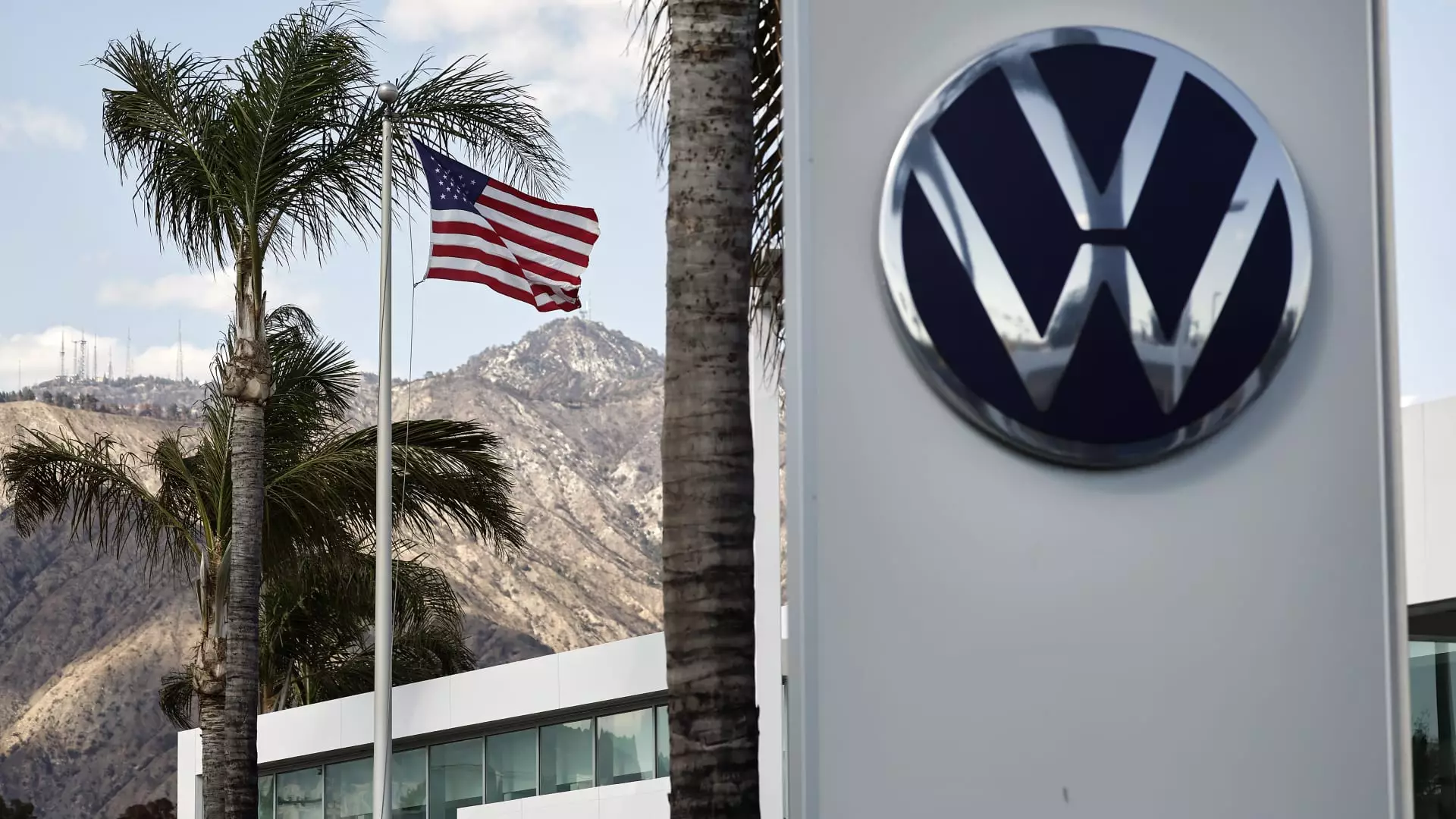Volkswagen, the automotive behemoth that has long stood as a symbol of German engineering prowess, finds itself embroiled in a calamity that has shaken its financial base to the core. Reporting a first-quarter decline in operating profit of 37%—down to a mere 2.9 billion euros—the specter of U.S. tariffs looms ominously over its future. While a sales revenue uptick of 2.8% paints a optimistic veneer, it does little to mask the underlying operational tumult, which is becoming a thorny issue not only for Volkswagen but for the entirety of the automotive industry.
The sense of urgency enveloping Volkswagen’s leadership is palpable. As Chief Financial Officer Arno Antlitz articulates, the company must exert iron-fisted control over the factors influencing its performance. It is less about the external pressures—ranging from fluctuating economic conditions to tariff alterations—and more about tuning its internal mechanisms to navigate these turbulent waters. The imperative to cut costs while still offering a range of appealing vehicles reflects a classic case of working smarter in a haze of unpredictability; it’s a call to arms, but will Volkswagen heed it in time?
Sales Metrics: A Double-Edged Sword
Despite the grim profit report, Volkswagen did manage to sell 2.1 million vehicles in the first three months of the year—a slight bump of 0.9% compared to last year. More interestingly, order intakes in Western Europe surged by an impressive 29%. However, one must question whether these statistics are merely a temporary reprieve or a significant trend. It’s critical to understand that while immediate sales figures might suggest a company on the rebound, they could mask a looming crisis; consumer confidence can change with the swipe of a pen, particularly with the unpredictability of U.S. trade policy.
Moreover, the negative net cash flow of -0.8 billion euros serves as a haunting reminder of the blue tides that Volkswagen is wrestling with. The reality is simple: increased vehicle sales won’t amend deeper systemic issues. The company could be poised at a vulnerable junction where future gains are entirely dependent on external conditions from trade policies to emissions regulations that are becoming increasingly stringent.
Tariff Woes and Global Implications
Carmakers, including Volkswagen, find themselves in the crosshairs of U.S. President Donald Trump’s erratic trade policies. While a selective easing of tariffs may provide short-term reprieve, the continued imposition of a 25% tariff on imported vehicles reveals a heavier burden that many manufacturers will bear. It’s not merely a financial hurdle; it reflects a broader trend of trade nationalism that upends the global supply chain.
Trump’s latest initiative to ease certain auto tariffs, while welcomed, does not negate the overarching reality: resources are being heavily diverted into managing tariffs rather than innovating and improving products. The auto industry’s well-oiled machine, built to foster global efficiency, is beginning to sputter. When alliances and partnerships—often spanning continents—are risked by volatile trade policy, the repercussions are bound to extend beyond balance sheets into R&D budgets and workforce stability.
The Path Forward: A Tightrope Walk
Looking forward, Volkswagen has signaled that it anticipates operating returns and net liquidity to hover at the lower end of forecasts. This foreboding outlook suggests a cautious approach ahead. While focusing on cost-efficiency is commendable, it must also marry innovation and technological advancement to ensure sustainability. The automotive landscape is swiftly evolving, propelled by a shift toward electric vehicles and greener technologies. Companies that fail to adapt to this transformation risk being left behind in a dust-filled race, and the stakes have never been higher.
Volkswagen stands at a pivotal crossroads, where decisions made today will dictate the trajectory of its future. It faces the task of transforming immense challenges into opportunities while negotiating a labyrinth of political and economic pressures. The balance of staying competitive without compromising innovation is a high-wire act that could either galvanize the brand into new heights or plunge it into deeper despair.

